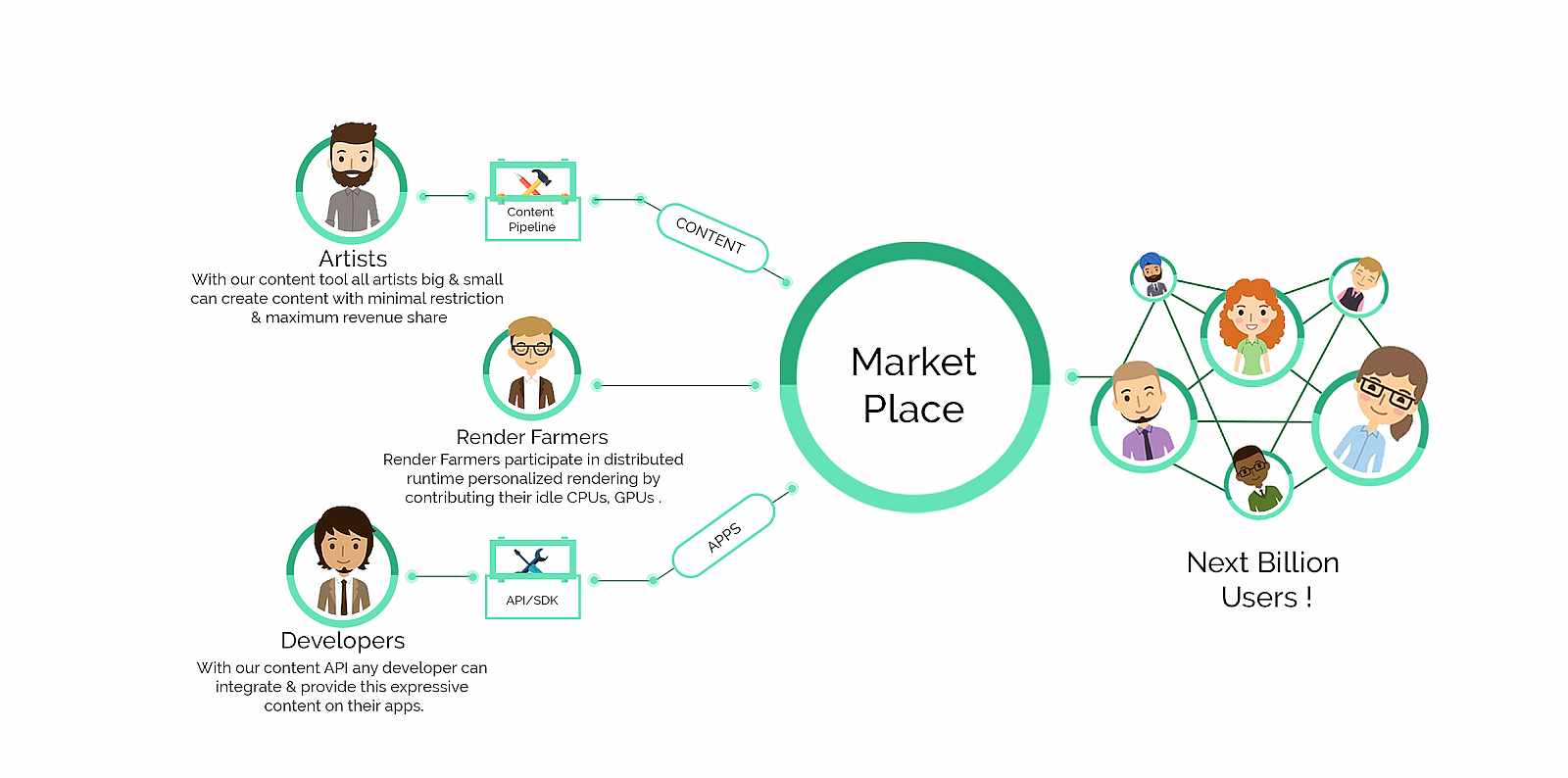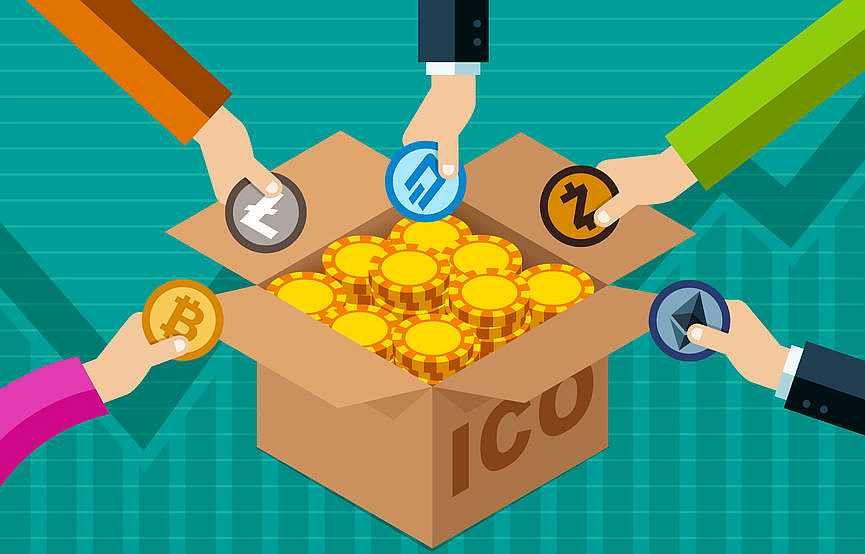With businesses embracing emerging technology like blockchain, AI, and cryptocurrencies, Tokens present a plethora of opportunities. Tokens also play an important role in Initial Coin Offerings (ICO).
The PEP Network is a good example and it is transforming existing business models to be more powerful, transparent, and scalable across different markets.
In an email interview with Digital Creed Udaykumar Kadirvel, CEO & Co-Founder, Mobigraph, PEP Network explains how artists and other ecosystem players can earn and benefit from personalised content exchange. The network presents an opportunity for content creators to earn in a free and fair marketplace. Consumers, developers and render farmers also stand to benefit.
DC: Will the Token Economy and tokens become a new way to pay for services and a substitute for cryptocurrencies?

Udaykumar Kadirvel, CEO & Co-Founder, Mobigraph Inc., PEP Network
Udaykumar: Token Economy presents a new way of doing business and opens many new opportunities which were earlier not possible. Incentive and rewards system is one such thing, which is an integral part of blockchain. With Tokens, there is direct participation and sometimes the right to govern. Tokens are built on top of complex cryptocurrency system and make it easy for developers to create services quickly. Tokens are not a substitute (for payments); rather Tokens depend on cryptocurrency to exist.
DC: Which type of companies offer tokens and go in for ICOs?
Udaykumar: Blockchain technology and innovations around it are expanding at a very fast pace. Today, most of the business verticals run ICOs (Initial Coin Offerings). Communications, Fintech, Gaming, VR, Advertising, Infrastructure, Energy, Healthcare, Storage, Privacy & Security, and Transport are some of the businesses conducting ICO. Fintech comprising of Trading, Financial Services, and Payment represent a major share in the ICOs, followed by Communications and Social Media.
DC: How is this regulated? What is the role of a country regulator in this?
Udaykumar: Until recently, ICOs had a wild west kind of run with little regulation as most governments were in “wait and watch” mode with the intention of not rooting out innovation. This lack of regulation has resulted in many ICO frauds and ICO exit scams, resulting in the loss of millions of dollars of investor capital.
This is forcing governments across the world to come up with regulatory frameworks for conducting ICOs in order to protect their citizens. Even now, many countries are still formulating laws about how to govern and regulate ICOs.
Some countries have firm opinions on ICOs, either in a positive or negative light, while others are building their regulations as they continue to learn more about the technology behind it.
Country regulators formulate the regulations needed for conducting and participating in an ICO, for their country. The regulations could be a blanket ban or adherence to certain rules and regulations for ICOs, like how to conduct an ICO ( is it utility or security), who all can participate in an ICO (every citizen or only accredited investors).
DC: Can you give us some specific examples of countries and their stance on ICO and tokens?
Udaykumar: China and South Korea have banned ICOs, but South Korea has not enforced it to the full extent of making South Koreans eligible to invest in foreign ICOs.
EU, Singapore, Japan, UK, and Hong Kong have allowed ICOs but are subject to future regulations. Some of these countries have allowed ICOs subject to regulations addressing AML/KYC protections.
Australia was perhaps the first country to launch ICO regulations, which involved adhering to the Corporations Act, issuing a disclosure document and acquiring a financial service license if the ICO offers financial advice to customers.
In the US, at a federal level, has not banned ICOs but the SEC (Securities and Exchange Commission) holds the position that most ICOs are securities and should be treated as such, which means ICOs should be registered and licensed with the SEC. Moreover, ICOs are expected to adhere to AML/KYC practices. But ICO rules vary from state to state. There are no regulations in some states, while some states have regulations requiring a deposit in equal amount. Others insist on licenses for businesses to engage in cryptocurrency trading.
Russia has come out with a number of orders that affect alt coins and mining registrations; taxation as well as the application of securities laws.
(Credit: The above data is sourced from a post in Bitcoin Market Journal, December 12, 2017).
DC: How do people encash their remaining tokens in future? Are banks involved?
Udaykumar: People can encash tokens at Crypto exchanges that list these tokens. Banks are involved in the sense that, to get the listed token encashed in exchanges, a person should link a bank account to the crypto wallet/account. The encashed amount would be directly credited into the linked bank account.
DC: Is your company going in for an ICO?
Udaykumar: Yes. Our ICO is called PEP Network.
PEP Network is the first Blockchain Render Protocol for the Personalisable Content Marketplace.
PEP Network’s vision is to serve visually rich, emotionally engaging, and runtime personalisable content, which pushes the industry forward to a new form of expressive content. Animojis, Live Stickers & Camera AR Lens are happening now.
Existing content marketplaces lack the ability to personalise. These are closed and stuck with outdated business models, with unfair economics for creators, consumers & developers.
PEP Network brings a new standard to this industry, transforming the existing business model to be more powerful, transparent, and scalable across different markets. This is only possible due to our innovations around blockchain, AI and distributed rendering.
Further, PEP Network introduces a new blockchain-based protocol for all its render and compute needs. What is revolutionary is that anyone with any amount of spare compute power can now become a render farmer on the PEP Network and earn. Render farming is now possible even if you have a mid-high end smartphone, not necessarily a high-end server. Render farmers form the core of the PEP Network, keeping the cost of real time personalised rendering low.

PEP Network ecosystem is designed in such a way that it maximises the advantages to all four participants of the network: Artists, Developers, End-Consumers, and Render Farmers.
A community friendly and trustless personalized content exchange among participants achieved by blockchain technology, which allows:
➔ Content ownership and copyright to creators rather than the marketplace owning the content.
➔ No middlemen commission, thus offering true value to both Content Creators and Consumers.
➔ Faster global transactions.
➔ Runtime personalization of content by consumers.
➔ Facilitates custom apps to integrate and access content marketplace for developers.
➔ Distributed rendering capability utilizing idle CPUs and GPUs for Render Farmers thereby ensuring fair allocation of remuneration for all participants.
DC: Explain the architecture or model. How does it work?
Udaykumar: PEP Network ecosystem is designed in such a way that it maximises the advantages to all four participants of the network: Artists, Developers, End-Consumers, and Render Farmers.
Artists : Artists get access to mobigraph studio content creation pipeline. Using this, they can create content which can be sold on PEP Network Marketplace at near zero commissions. Selling content on PEP Network is very advantageous than the current content marketplaces which charge around 50-65% as commissions.
Creating content on PEP Network is advantageous because the content can be used in various different use cases created by the developers.
Example: On Line Sticker Store content creators get only 35% of the revenue made via content sale.
Developers : Developers via the API get access to the vibrant and completely personalisable content and technology to explore and create new age apps. Further, the open economics mean that they could get artists to create content that suit their use case. One example of such developer is Swipe Studio, a geo-filter and world lens maker for Snapchat. Integration with the API gave rise to many unexplored AR use cases for PEP Content.
Example: Live SwipeStudio Integration.
End Users : The biggest beneficiary of this content & technology are the end users. Our MVP is used by around 650K+ users and monthly around 12 million GIFs are shared.
Render Farmers : What is revolutionary is that anyone with any amount of spare compute power can now become a render farmer on the PEP Network and earn. Render farming is now possible even if you have a mid-high end smartphone, not necessarily a high-end server. Render farmers form the core of the PEP Network, keeping the cost of real-time personalised rendering low.
Resources to learn more about PEP network:
Website : www.gopep.network
Whitepaper : https://www.gopep.network/pdf/Whitepaper.pdf
Onepager : https://www.gopep.network/pdf/OnePager.pdf
MVP : www.xpresso.me









